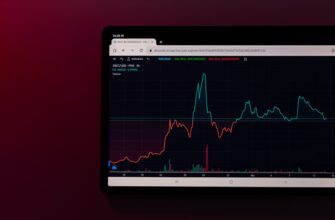## IntroductionnnIn today’s digital age, safeguarding your cryptocurrency assets is non-negotiable. For savvy investors, storing backup funds in cold storage offers unparalleled security against hacks and online threats. But what if you’re on a budget? This guide demystifies how to implement **low-cost cold storage solutions** for your emergency crypto reserves, balancing ironclad protection with affordability. Whether you’re a long-term holder or a cautious newcomer, discover practical strategies to shield your wealth without breaking the bank.nn## What Is Cold Storage?nnCold storage refers to keeping cryptocurrency offline, disconnected from the internet. Unlike “hot wallets” (software-based and internet-connected), cold storage methods isolate private keys from online vulnerabilities. This makes them ideal for **backup funds**—reserves you rarely access but must protect at all costs. Common types include:nn- **Hardware Wallets**: Physical devices like Ledger or Trezor (cost: $50–$200).n- **Paper Wallets**: Free printouts of QR codes/keys, stored physically.n- **Metal Backup Plates**: Engraved steel plates ($20–$50) resistant to fire/water.n- **Air-Gapped Devices**: Old smartphones or USBs without internet access.nn## Why Cold Storage for Backup Funds?nnUsing cold storage for emergency reserves isn’t just smart—it’s critical. Here’s why:nn1. **Security**: Offline storage eliminates hacking risks from malware or phishing.n2. **Long-Term Reliability**: Protects against exchange collapses or software failures.n3. **Cost Efficiency**: Avoids recurring fees associated with custodial services.n4. **Control**: You own the keys, reducing third-party dependency.nnFor backup funds (e.g., 5–10% of your portfolio), cold storage ensures they remain intact during crises—ready if you lose access to primary wallets.nn## Low-Cost Cold Storage SolutionsnnAchieving robust security doesn’t require luxury gadgets. Here are budget-friendly options:nn- **Paper Wallets (Free)**: Generate keys offline via tools like BitAddress, print them, and store in a safe. *Ideal for small sums under $1,000.*n- **DIY Metal Plates ($10–$30)**: Use services like CryptoSteel or DIY kits to stamp seed phrases onto fireproof metal.n- **Repurposed Hardware**: Turn an old smartphone into a cold wallet with free apps (e.g., AirGap Vault), disabling Wi-Fi/bluetooth.n- **Budget Hardware Wallets**: Entry-level models like Ledger Nano S ($59) offer enterprise-grade encryption at minimal cost.nn*Tip:* Combine methods—e.g., store seed phrases on metal but use a paper wallet for quick access.nn## How to Set Up Low-Cost Cold Storage in 5 StepsnnFollow this simple, affordable process:nn1. **Choose Your Method**: Start with paper or a $20 metal plate for minimal investment.n2. **Generate Keys Offline**: Use open-source software (e.g., Electrum) on a clean, offline computer.n3. **Transfer Funds**: Send a small test amount first, then move your backup funds.n4. **Secure Storage**: Place backups in multiple locations—e.g., home safe + bank deposit box.n5. **Verify Access**: Test recovery annually using your keys (without exposing them online).nn*Cost-Saving Hack:* Use multisig setups requiring 2/3 keys to spend, distributing risk across cheap mediums.nn## Best Practices for Managing Cold Storage BackupsnnMaximize safety and longevity with these rules:nn- **Encrypt Physical Backups**: Add a BIP39 passphrase to paper/metal backups.n- **Diversify Locations**: Store copies in geographically separate, secure spots.n- **Regular Audits**: Check backups every 6–12 months for damage or corrosion.n- **Minimal Updates**: Avoid unnecessary interaction—cold storage thrives on neglect.n- **Documentation**: Leave clear instructions for heirs (e.g., via encrypted USB).nn## Frequently Asked Questions (FAQ)nn**Q: Is cold storage really necessary for small backup funds?**nA: Absolutely. Even modest sums can be targets. Cold storage costs as little as $10 and prevents catastrophic loss.nn**Q: Can I recover funds if my paper/metal backup is damaged?**nA: Only if you have multiple copies. Always create duplicates stored separately.nn**Q: Are hardware wallets worth the cost for backups?**nA: For funds exceeding $5,000, yes. A $60 wallet is cheaper than losing assets to a hack.nn**Q: How often should I update cold storage?**nA: Never, unless you move funds. The less you touch it, the safer it stays.nn**Q: What’s the biggest mistake in low-cost cold storage?**nA: Using unverified software or storing all backups in one place. Always test and diversify.nn## Final ThoughtsnnProtecting backup funds with **low-cost cold storage** is both achievable and essential. By leveraging paper, metal, or budget hardware, you create a financial safety net immune to digital threats. Start small, prioritize redundancy, and remember: in crypto, the cheapest insurance is the peace of mind from knowing your wealth is truly secure.








